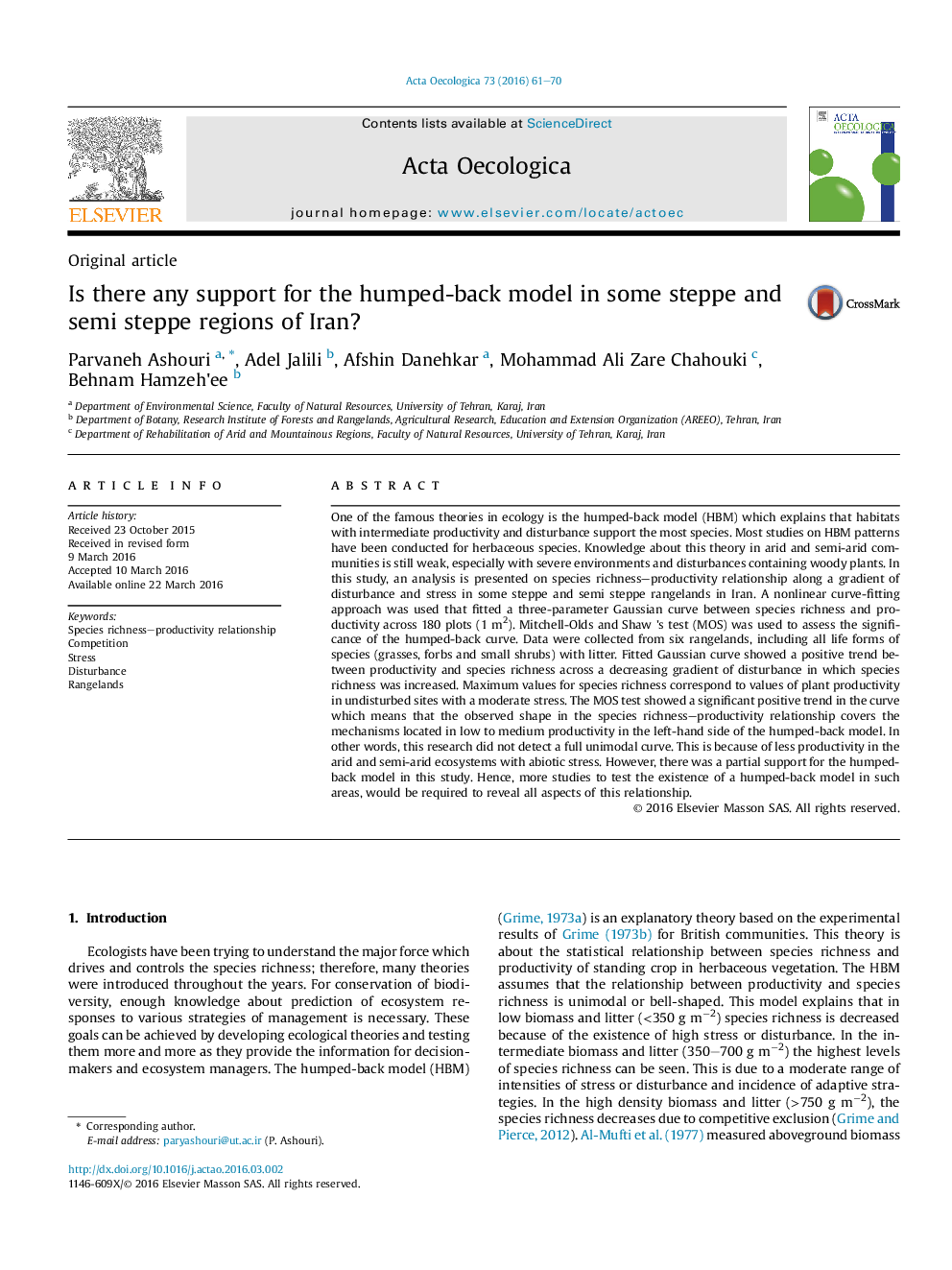| کد مقاله | کد نشریه | سال انتشار | مقاله انگلیسی | نسخه تمام متن |
|---|---|---|---|---|
| 4380703 | 1617699 | 2016 | 10 صفحه PDF | دانلود رایگان |
عنوان انگلیسی مقاله ISI
Is there any support for the humped-back model in some steppe and semi steppe regions of Iran?
ترجمه فارسی عنوان
آیا در برخی از مناطق استپ و نیمه استپ ایران وجود دارد؟
دانلود مقاله + سفارش ترجمه
دانلود مقاله ISI انگلیسی
رایگان برای ایرانیان
کلمات کلیدی
رابطه بین بهره وری غنای گونه، رقابت، فشار، اختلال، مراتع،
موضوعات مرتبط
علوم زیستی و بیوفناوری
علوم کشاورزی و بیولوژیک
بوم شناسی، تکامل، رفتار و سامانه شناسی
چکیده انگلیسی
One of the famous theories in ecology is the humped-back model (HBM) which explains that habitats with intermediate productivity and disturbance support the most species. Most studies on HBM patterns have been conducted for herbaceous species. Knowledge about this theory in arid and semi-arid communities is still weak, especially with severe environments and disturbances containing woody plants. In this study, an analysis is presented on species richness-productivity relationship along a gradient of disturbance and stress in some steppe and semi steppe rangelands in Iran. A nonlinear curve-fitting approach was used that fitted a three-parameter Gaussian curve between species richness and productivity across 180 plots (1Â m2). Mitchell-Olds and Shaw 's test (MOS) was used to assess the significance of the humped-back curve. Data were collected from six rangelands, including all life forms of species (grasses, forbs and small shrubs) with litter. Fitted Gaussian curve showed a positive trend between productivity and species richness across a decreasing gradient of disturbance in which species richness was increased. Maximum values for species richness correspond to values of plant productivity in undisturbed sites with a moderate stress. The MOS test showed a significant positive trend in the curve which means that the observed shape in the species richness-productivity relationship covers the mechanisms located in low to medium productivity in the left-hand side of the humped-back model. In other words, this research did not detect a full unimodal curve. This is because of less productivity in the arid and semi-arid ecosystems with abiotic stress. However, there was a partial support for the humped-back model in this study. Hence, more studies to test the existence of a humped-back model in such areas, would be required to reveal all aspects of this relationship.
ناشر
Database: Elsevier - ScienceDirect (ساینس دایرکت)
Journal: Acta Oecologica - Volume 73, May 2016, Pages 61-70
Journal: Acta Oecologica - Volume 73, May 2016, Pages 61-70
نویسندگان
Parvaneh Ashouri, Adel Jalili, Afshin Danehkar, Mohammad Ali Zare Chahouki, Behnam Hamzeh'ee,
